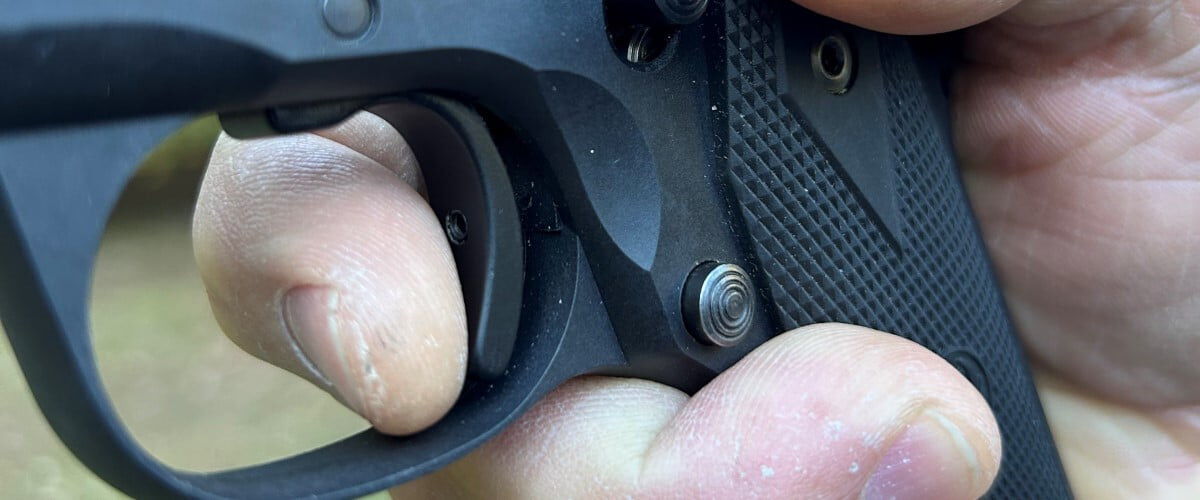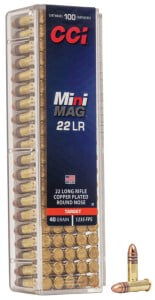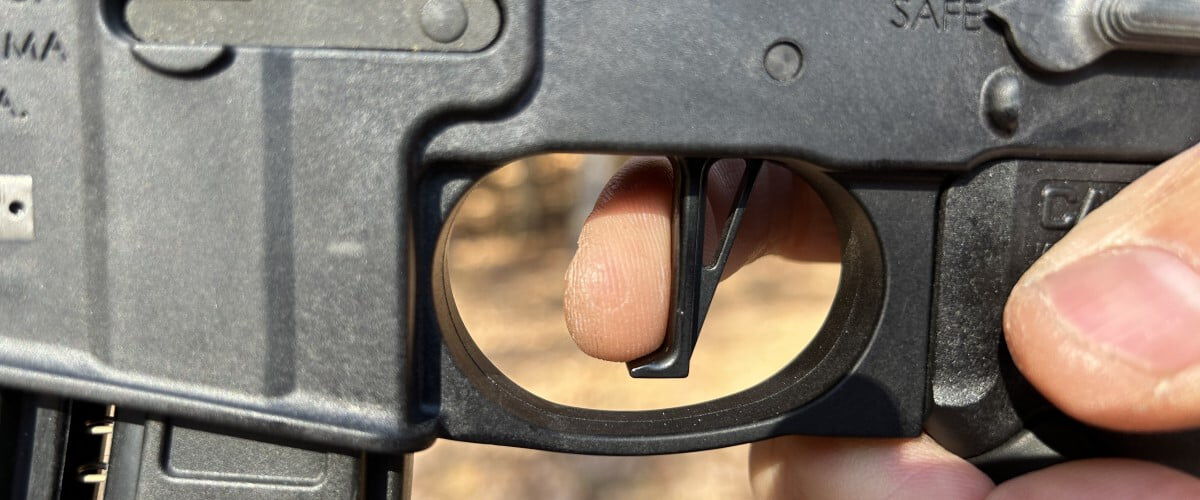
It might seem counterintuitive that a tiny movement could have such a large effect. Yet that’s the case when pulling the trigger on rimfire handguns and rifles. When done correctly, trigger pull is one of many components that contribute to good shooting. Performed incorrectly, it can mess up the works.
Weight A Minute
Rimfire expert and CCI ambassador Todd Jarrett says good trigger pull fundamentals begin with the gun itself.
“If you want to become more successful in speed and accuracy with handguns, you should start with a trigger pull that is less than 4 pounds,” he says. “Many companies now make guns with trigger pulls in that under-4-pound range. If you are used to shooting a very heavy trigger pull—say 6 to 8 pounds—and you go under 4, most people would say that’s a hair trigger, which is a bad term in my opinion. Imagine picking up a 10-pound weight with your trigger finger versus a 4-pound weight. At less than 4 pounds, it allows you to have a smoother, cleaner break to the target, which will always give you more accuracy and speed.”
The same concepts hold true with rimfire rifles. Jarrett says most factory bolt-action guns have trigger pulls of about 6 to 7 pounds, and most AR-style rifles are at 6 to 8 pounds.
Mini-Mag HP
This CCI classic is accurate and minimizes fouling thanks to clean-burning powder.
Buy Now
“Your object is to concentrate on the sight, which is a conscious act, and the trigger should always be a subconscious act,” he says. “So the lighter the trigger, the less you have to think about pulling the trigger. My recommendation is if you want to become a better rifle shot, whether in competition or hunting, you need to be under 4 pounds.”
Grip
Maintaining the correct grip is critical to executing proper trigger pull with a handgun, Jarrett says.
“We get back to making sure we’re maintaining an extremely tight trip on the gun, especially with the support hand,” he says. “I’m holding the gun with nine fingers and pulling the trigger with one.”
The trigger pull will be slightly different when firing a gun with a two-stage trigger versus a model with a single-stage trigger. Two-stage triggers, as the name implies, have distinct stages: the first-stage take-up and the second-stage “wall,” which is the resistance you feel after the take-up. The shot will break if the trigger travels past that point.
“With two-stage triggers, there is typically a fair amount of take-up,” Jarrett says. “That take-up is very important to understand. It’s a conscious effort in the beginning, and then you come to what we call the wall. When that happens, your focus should come back in and go back to the target and make sure it’s there, because movement of less than the width of a dime will fire that shot. For precision shooting, I’m doing it one hair at a time until the shot breaks.”
The Reset
After the shot, your trigger finger will hit a stopping point, and you must reset it using one of two techniques. The first calls for releasing the trigger only to the point where it resets, right at the breaking point. With the other, called the sweeping technique, your finger comes completely off the trigger and then retouches it to begin the process again. Jarrett prefers the latter method.With a single-stage trigger, trigger pull is almost exactly the same, but there’s no take-up, Jarrett says.
“It’s almost as if you’re at the wall, and you squeeze slowly from there,” he says. “And again, I’m doing it one hair at a time for precision.”

Finger placement can also be critical with trigger pull. “If you’re going to run any type of lighter trigger, I like to make sure I use the pad of my finger, where the trigger is in the center of the nail area, and be consistent with that every time,” Jarrett says.
Many modern rifles and pistols have straight triggers, which lets you place your finger near the bottom of the trigger guard, providing an advantage. “I’ll use the bottom of the guard so my finger is dragging across it,” Jarrett says. “The farther you are at the bottom, the easier it is to break.”
With proper technique and practice, pulling the trigger becomes, as Jarrett mentioned, an unconscious act.
“When I take a gun and put it up on the target, I never even know I’ve pulled the trigger,” he says. “My 100 percent concentration is on the target at any given distance, and my brain automatically tells me to touch the trigger. It doesn’t matter whether it’s with a scope, red-dot or iron sights.”